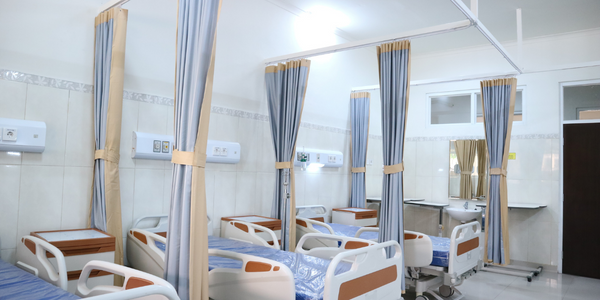Transforming fan experiences: How the Golden State Warriors built engagement, safety, and excitement into Chase Center
---nyse--hpe_1.jpg)
Customer Company Size
Large Corporate
Region
- America
Country
- United States
Product
- HPE SimpliVity 380
- Aruba CX 8400 Switch Series
- Aruba 3810 Switch Series
- Aruba Wi-Fi 6E Wireless access points
- Aruba Location Beacons
Tech Stack
- Aruba AirWave Network Management
- Aruba ClearPass Policy Manager
Implementation Scale
- Enterprise-wide Deployment
Impact Metrics
- Customer Satisfaction
- Brand Awareness
Technology Category
- Infrastructure as a Service (IaaS) - Cloud Computing
- Networks & Connectivity - WiFi
- Networks & Connectivity - Bluetooth
Applicable Functions
- Sales & Marketing
- Business Operation
Use Cases
- Building Automation & Control
- Real-Time Location System (RTLS)
Services
- System Integration
- Cloud Planning, Design & Implementation Services
About The Customer
The Golden State Warriors is a professional basketball team based in San Francisco, California. The team is part of the Western Conference Pacific Division of the National Basketball Association (NBA). The Warriors have a rich history and are one of the oldest teams in the NBA. They have won multiple NBA championships and are known for their high-scoring, fast-paced style of play. The team is also known for its dedicated fan base. The Warriors recently moved from their former home in Oakland to the newly constructed Chase Center in San Francisco. The Chase Center is a state-of-the-art sports and entertainment complex that aims to provide an unparalleled fan experience.
The Challenge
The Golden State Warriors were looking to create a next-generation stadium that would deliver unparalleled fan experiences. They wanted to build connectivity and intelligence into the facility, turning data into a business driver. The team had to rethink its approach to technology when they bid farewell to their former home in Oakland after 47 seasons. The pre-existing network at the Oakland Arena was a constant challenge, leading the team to envision their ideal state and what they wanted to provide. The construction of the Chase Center in San Francisco gave the team the opportunity to make their vision a reality and evolve what's possible for an event arena. However, the pandemic put a halt to all activities at the Chase Center, forcing the team to navigate a way forward that may be even better than what they originally imagined.
The Solution
The team integrated technology into the structure of the Chase Center from the start. They built a mobile app to make the experience seamless for fans. The Warriors + Chase Center Mobile App allows fans to synchronize their purchases on Ticketmaster, pay for purchases with a Chase credit card, and receive personalized content feeds based on their preferences. The team partnered with Hewlett Packard Enterprise to turn their vision into reality. They built a technology core that would enable a multitude of experiences even as times and tastes continue to change. The technology core includes an agile data center and a network with massive capacity. The network is built on an Aruba CX 8400 Core Switch, with Aruba 3810 edge switches. Aruba Bluetooth low-energy beacons power location services within the mobile app while Aruba's ClearPass Policy Manager secures the network and authenticates secure users and devices. Aruba's AirWave delivers operational telemetry in real-time, which is critical on game day. HPE SimpliVity hyperconverged infrastructure anchors the software-defined data center, powering the team's front end, back end, and disaster recovery efforts.
Operational Impact
Quantitative Benefit

Case Study missing?
Start adding your own!
Register with your work email and create a new case study profile for your business.
Related Case Studies.

Case Study
Turning A Stadium Into A Smart Building
Honeywell created what it called the “intelligent system” for the National Stadium in Beijing, China, turning the venue for the opening and closing events at the 2008 Summer Olympics into a “smart building.” Designed by highly controversial artist Ai Weiwei, the “Bird’s Nest” remains one of the most impressive feats of stadium architecture in the world. The 250,000 square meter structure housed more than 100,000 athletes and spectators at a time. To accommodate such capacity, China turned to Honeywell’s EBI Integrated Building Management System to create an integrated “intelligent system” for improved building security, safety and energy efficiency.

Case Study
BACnet enabled Wireless Temperature Monitoring System
Client offered a Temperature Monitoring System which consists of Wireless Transmitters and Application Software. Third party BACnet Application such as a Building Automation System needs access to vital parameter such as temperature, humidity, CO2, etc., measured by wireless sensor devices. Client needed a solution to allow data exchange from its Temperature Monitoring System with BMS.

Case Study
Leading Tools Manufacturer Transforms Operations with IoT
Stanley Black & Decker required transparency of real-time overall equipment effectiveness and line productivity to reduce production line change over time.The goal was to to improve production to schedule, reduce actual labor costs and understanding the effects of shift changes and resource shifts from line to line.

Case Study
Medanta the Medicity
Medanta is one of India's largest multi-super specialty institutes located in Gurgaon, India. Some of the key challenges facing Medanta included: - No Monitoring & Control over Energy Use, Indoor Air Quality, Indoor Lighting Quality & Noise Levels. - No compliance monitoring of temperature & pressure in critical care wards. - Energy bills were a surprise with no way to forecast energy costs. - Missing data & insights that could be used for targeting areas of improvement. - Existing Billing Management System (BMS) was inflexible and could not be used across the enterprise to serve the needs of different users. Requirements Based on these challenges, Medanta was looking for a comprehensive solution to Monitor & Control: - Energy Usage - Power Generators - Clean Rooms - HVAC Temperature - Chiller Temperature - Hydrant Pressure - Air Quality & Noise Levels - Critical Wards

Case Study
Jaguar Land Rover Speeds Order-to-Cash Cycle
At Jaguar Land Rover, vehicles physically move around the facility for testing, configuration setting, rework and rectification, leading to a longer search time to get each vehicle to its next process facility. The main goal is to minimize the vehicles' dwell time between end of line and the delivery chain which was previously a manually intensive process. Jaguar Land Rover's goal was to build on the success of an earlier RFID project and improve the efficiency of delivering vehicles to meet dealer orders.







